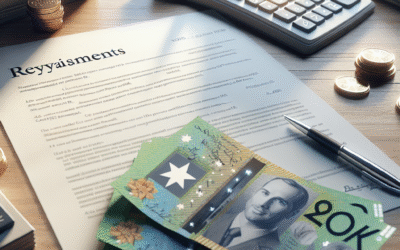Understanding the People’s Choice Interest Rate Cut
What is the People’s Choice Interest Rate Cut?
The people’s choice interest rate cut refers to a decision made by central banks or financial authorities to lower interest rates based on public demand or economic necessity. This cut is typically aimed at stimulating economic growth by making borrowing cheaper for consumers and businesses. Lower interest rates can encourage spending and investment, which may lead to increased economic activity.
Historical Context of Interest Rate Cuts
Interest rate cuts have a long history as a tool used by central banks to manage economic stability. In times of recession or economic downturn, central banks often lower rates to incentivize borrowing and spending. For example, during the 2008 financial crisis, many countries implemented significant interest rate cuts to boost their economies. The people’s choice interest rate cut reflects a growing trend of policymakers considering public opinion and economic conditions when making these decisions.
Impact of the People’s Choice Interest Rate Cut
Effects on Borrowers
When interest rates are cut, borrowers benefit significantly. Here are some key impacts:
- Lower Monthly Payments: Borrowers often see a decrease in their monthly loan payments, making it easier to manage debt.
- Increased Loan Accessibility: With lower rates, banks may be more willing to approve loans, allowing more people to access credit.
- Refinancing Opportunities: Homeowners may take the opportunity to refinance their mortgages at lower rates, reducing their overall debt burden.
These effects can lead to increased consumer confidence and spending, which is vital for economic growth.
Effects on Savers
While borrowers may rejoice, savers may not feel as positive about a people’s choice interest rate cut. Here’s how:
- Reduced Interest Earnings: Savers earn less interest on savings accounts and fixed deposits, affecting their long-term savings goals.
- Shift in Investment Strategies: Many savers may seek alternative investments that offer better returns, potentially leading to increased risk.
- Impact on Retirees: Retirees who rely on interest income may find it challenging to maintain their standard of living.
Understanding these impacts is crucial for both borrowers and savers as they navigate financial decisions in light of changing interest rates.
Analyzing the People’s Choice Interest Rate Cut
Economic Indicators Influencing the Cut
Several economic indicators can influence a people’s choice interest rate cut. Key indicators include:
- Inflation Rates: If inflation is low, central banks may decide to cut rates to stimulate the economy.
- Unemployment Rates: High unemployment can prompt central banks to lower rates to encourage job creation through increased spending.
- Consumer Confidence: If consumers are confident in the economy, a rate cut could further enhance that confidence and spending.
These indicators help policymakers gauge the overall economic climate and make informed decisions regarding interest rates.
Public Opinion on the People’s Choice Interest Rate Cut
Public opinion plays a significant role in the decision-making process for interest rate cuts. Many people believe that lower rates can lead to:
- Economic Growth: The general consensus is that lower rates can stimulate spending and investment, leading to growth.
- Increased Job Opportunities: As businesses invest and expand due to lower borrowing costs, job creation often follows.
- Support for Homeownership: Many view lower interest rates as a way to make homeownership more accessible, helping families achieve their dreams.
However, there are also concerns about the long-term implications of sustained low rates, such as asset bubbles and increased debt levels.
Future Predictions for the People’s Choice Interest Rate Cut
Potential Changes in Economic Policy
As we look to the future, several potential changes in economic policy could affect the people’s choice interest rate cut:
- Adaptive Monetary Policies: Central banks may adopt more flexible monetary policies to respond to rapid economic changes.
- Focus on Sustainable Growth: Policymakers might prioritize sustainable economic growth over short-term boosts, leading to careful consideration of rate cuts.
- Global Economic Factors: International economic conditions, such as trade tensions or global recessions, may influence domestic interest rate decisions.
These factors highlight the complexities of economic policy and the need for continuous monitoring of both domestic and global indicators.
Long-term Effects on the Market
The long-term effects of the people’s choice interest rate cut can be significant. Potential outcomes include:
- Asset Price Inflation: Prolonged low rates can lead to inflated asset prices, including real estate and stocks, which may not reflect true economic value.
- Debt Accumulation: Consumers and businesses may accumulate more debt, leading to potential financial instability in the future.
- Changing Investment Landscapes: Investors may shift their strategies in search of higher yields, impacting various markets and sectors.
These long-term effects necessitate careful consideration by both policymakers and the public when discussing interest rate decisions.
FAQs
1. What is the people’s choice interest rate cut?
The people’s choice interest rate cut is a decision by central banks to lower interest rates based on public demand and economic conditions.
2. How does the people’s choice interest rate cut affect borrowers?
It typically lowers monthly payments, increases loan accessibility, and provides refinancing opportunities for borrowers.
3. What are the impacts of the people’s choice interest rate cut on savers?
Savers may earn less interest on their savings, prompting them to seek higher-yield investments.
4. What economic indicators influence the people’s choice interest rate cut?
Key indicators include inflation rates, unemployment rates, and consumer confidence levels.
5. How does public opinion affect the people’s choice interest rate cut?
Public opinion can drive policymakers to consider rate cuts as a means to stimulate economic growth and job creation.
6. What are the long-term effects of the people’s choice interest rate cut?
Long-term effects can include asset price inflation, increased debt accumulation, and changes in investment strategies.
For more information on interest rates and economic policies, visit Federal Reserve and Investopedia.




0 Comments